Blog • Understanding Publishing
Last updated on Dec 19, 2023
Amazon Publishing: The Quiet Giant of the Publishing World
Ricardo Fayet
Reedsy co-founder and Chief Marketing Officer, Ricardo Fayet has worked with hundreds of authors on their launches and marketing campaigns. He is the author of two bestselling guides on marketing for authors, and a regular presenter at the largest writers' conferences.
View profile →Amazon is pretty much the largest retailer of books in the English-speaking world — and by quite a large margin. But did you know that it's also a publishing in house? In fact, Amazon publishes and sells so many titles that it has started to beat the traditional “Big 5” publishers on a number of fronts.
In this post, we’ll take you on a quick tour of Amazon Publishing, examining its history and business model. We’ll also peel back the curtain to see how they differ from their traditional rivals, like Penguin Random House (PRH) and Simon & Schuster.
What is Amazon Publishing?
In 2009 — two years after the launch of the Kindle Reader and their self-publishing service, Kindle Direct Publishing — Amazon cut the ribbon on its first publishing imprint, AmazonEncore. Specializing in out-of-print and self-published books (that would have been relatively inexpensive to acquire), Encore soon found enough success to spur its parent company into a period of fairly rapid expansion.
Before long, Amazon started acquiring and opening several imprints, each focusing on different genres and audiences. At the latest count in 2025, they now comprise of 17 imprints, publishing over 1,000 fiction, nonfiction, and children’s titles each year — many of which have picked up awards and accolades.
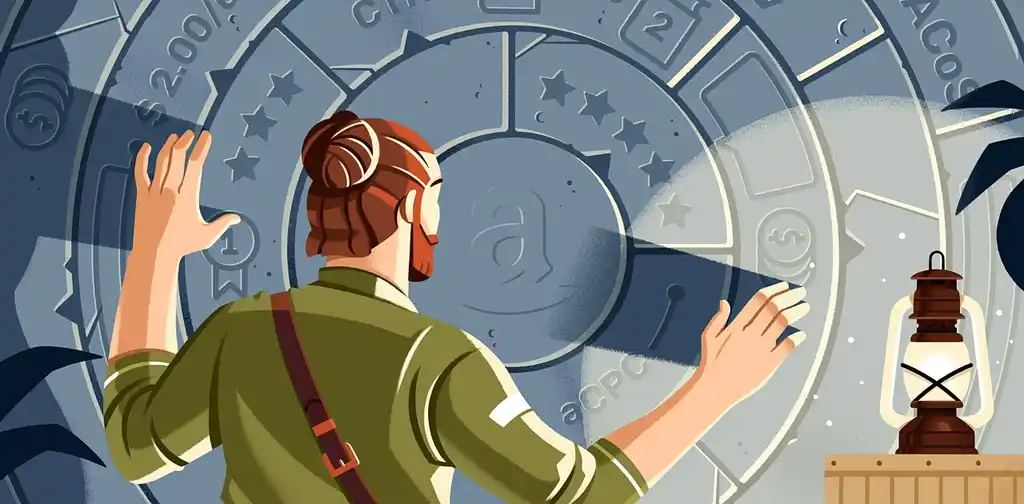
FREE COURSE
Amazon Algorithms for Authors
Learn to optimize your book description, pick categories, and sell more books.
Publishing to market
Amazon Publishing has one major advantage over its competitors: access to data from its marketplace. While all publishers will get regular sales reports from big box bookstores, indie bookshops, and online retailers, Amazon has a much deeper understanding of its customers.
For example, PRH might learn from reports that sales of its Jack Reacher books are proportionately higher in the southern states — this might lead them to put more marketing money into those regions the next time they publish a Lee Child book. It might even make them seek similar thrillers set in Louisiana and Alabama.
Whereas Amazon’s more precise understanding of the people who buy books, thanks to the search and purchase histories, means they can tell if readers of a particular book have gone on to purchase sequels — or how many books they read a year. If they wanted to, they could probably tell which exact books are bought by residents of a particular postcode, which means they can more accurately publish to market.
Q: Should authors sell exclusively on Amazon?
Suggested answer
It depends on your ultimate career/business goals. A book that is only published on Amazon looks like a self-published book. For non-fiction, if your goal is the elevation of your thought leadership status, you benefit from your book being "everywhere". Including links to numerous retailers on your website is not a traffic flow exercise, where we are trying to spread out your sales - it is a branding exercise. We want to show the prospective reader, or podcast host, or convention booker that your presence is as far and wide as possible. Widespread distribution increases perceived legitimacy.
Chris is available to hire on Reedsy ⏺
In the children's book world, an author selling their book only on Amazon is not ideal for several reasons. Most advance trade review outlets will only review books that have a broad distribution, or at least are sold also in bookstores or non-traditional book outlets. Also, selling only on Amazon largely cuts out the school and library distribution, which typically use wholesalers. Amazon, in my opinion, is an important part of book sales, naturally, due to its huge marketshare of children's book sales, but best done in conjunction with other sales and marketing opportunities.
Tara is available to hire on Reedsy ⏺
For most authors—especially if you’re just starting out—selling exclusively on Amazon is a smart move. Managing multiple platforms can be overwhelming, and Amazon’s KDP Select program gives you some great tools to build momentum. Page reads from Kindle Unlimited and features like countdown deals make it easier to get your book in front of readers without spreading yourself too thin.
That doesn’t mean you’re stuck with Amazon forever. Once you’ve got some traction—like more reviews, a growing fanbase, or even a backlist—you can start exploring other platforms or even direct sales. But starting with Amazon keeps things simple and helps you focus on what matters most: reaching readers and building your audience.
If you’re new to publishing, Amazon isn’t just a platform—it’s the best foundation to launch your career.
Jd is available to hire on Reedsy ⏺
A treasure trove of reader data
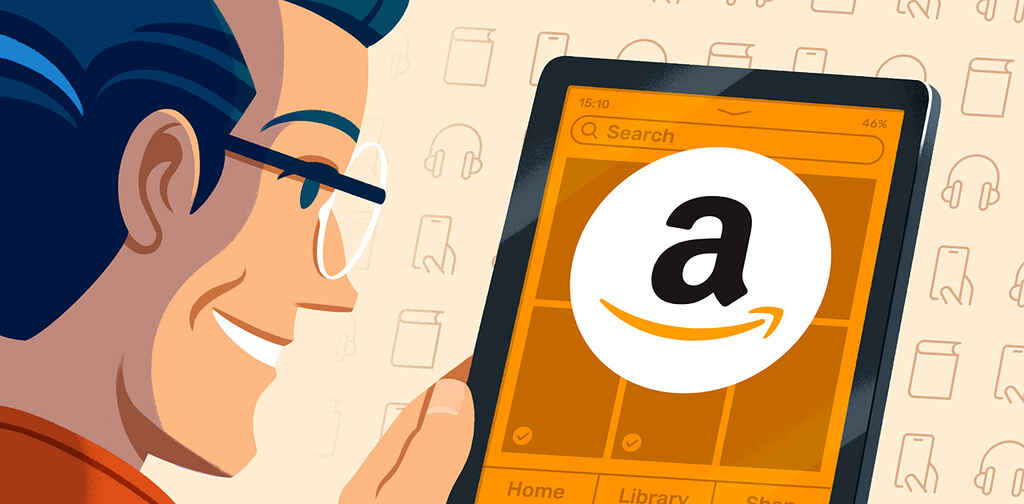
In addition, when all publishers list their books on Amazon, they select keywords that give a deeper indication of the book’s content than you might get from, say, the Dewey Decimal system. These keywords and categories would also allow the retail giant to make more assumptions about how certain books perform in the market.
While not all the data Amazon collects directly impacts their publishing business, it does give them the upper hand when it comes to knowing what sorts of books (and in which genres) are likely to drive readers and help them turn a profit.
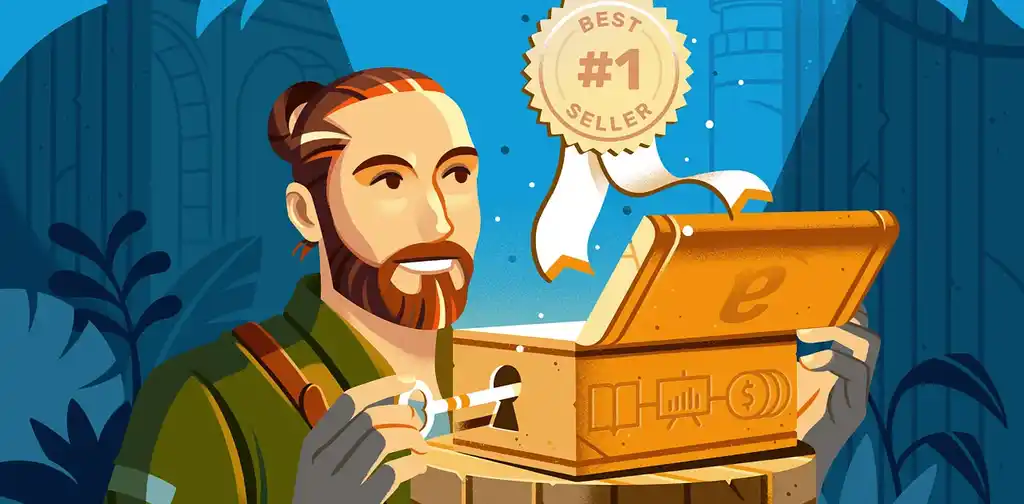
FREE COURSE
Amazon Ads for Authors
Learn to reach readers while they browse the world’s biggest bookstore.
Cutting out the middleman
And speaking of profit, it’s also worth noting that Amazon Publishing is effectively a direct-to-consumer business. Stores like Barnes & Noble and Waterstone’s will get books at a wholesale price 25-40% lower than the cover price — the margin that allows them to pay their bills.
By cutting out the retailers, Amazon gets to keep all of the sale price (minus the author’s royalties), meaning they earn at least 3-4 times as much every time they sell one of their ebooks over a Big 5 title. So, here you can see the incentive that Amazon has for putting out titles that rival those released by the publishing old guard.
Let’s now look at Amazon’s very wide imprint offer.
Amazon’s imprints: something for everyone!
While catering to target audiences isn’t new, what sets a publisher apart is the books they release and the authors they publish. Through their many imprints, Amazon has already put out lots of successful titles across multiple genres, and will likely continue to do so. Let’s look at some of the titles that stood out the most for each of Amazon’s imprints.
|
Imprint |
Specialty |
Stand-Out Title |
|
General fiction and nonfiction |
One Indian Girl by Chetan Bhagat |
|
|
Out-of-print books from bestsellers and new authors |
The Emerald Scepter by Paul Kemprecos |
|
|
Short fiction and nonfiction |
Emergency Skin by N. K. Jemisin |
|
|
Literary fiction and nonfiction |
After Disasters by Viet Dinh |
|
|
Publishes bestselling and award-winning world literature in translation in the United States |
A River in Darkness: One Man’s Escape from North Korea by Masaji Ishikawa |
|
|
A sister of Amazon Crossing, it specializes in translating children’s books into English |
A Sari for Ammi by Mamta Nainy |
|
|
Children’s books for readers up to 12 years old |
You Are (Not) Small by Anna Kang |
|
|
Teen and young adult |
The Hundredth Queen by Emily R. King |
|
|
Science fiction and fantasy |
The Book of the Unnamed Midwife by Meg Elison |
|
|
Mysteries, thrillers, and true crime novels |
The Eighth Sister by Robert Dugoni |
|
|
Comics and graphic novels |
The Hedge Knight by George R.R. Martin and Ben Avery |
|
|
Romance |
Crazy Little Thing by Tracy Brogan |
|
|
Contemporary fiction, historical fiction, memoirs, and popular non-fiction |
In Farleigh Field by Rhys Bowen |
|
|
Spotlights the voices of woman of color, gender non-conforming, lesbian, bisexual, transgender, and queer writers |
Tomboyland by Melissa Faliveno |
|
|
Christian fiction |
Since You’ve Been Gone by Christa Allan |
|
|
Self-help and inspirational |
A Beautiful Work in Progress: A Memoir by Mirna Valerio |
|
|
Stories centered on strong female protagonists written by emerging and diverse voices. |
The Vibrant Years by Sonali Dev |
They sign prestige authors too
In its early years, Amazon Publishing built its base with newer authors — many of whom had actually found success by self-publishing on Kindle. In recent years however, there’s been more movement towards signing big-name authors (along with transitioning to an agent-led system of acquiring manuscripts). This is most obviously seen in their Amazon Original Stories imprint, which features short works from blockbuster authors like Margaret Atwood, N.K. Jemisin, Ian Rankin and Dean Koontz.
As Amazon Publishing has zero presence in traditional bookstores, it’s unlikely that many bestselling authors will consider them for their next hit novels. However, we see they can be tempted to write some shorter works — or, in Mindy Kaling’s case, helm an imprint — for what we must assume is a healthy chunk of cash.
Now that we’ve seen what things look like from the publisher’s side, let’s focus on what authors can expect when they sign a book deal with Amazon.
What’s it like to publish with an Amazon Imprint?
So what are the benefits and drawbacks of landing a deal with Amazon? Will you get preferential treatment on the Kindle store? Are the advances and royalties different? Let’s take a look.
Everything is digital first
Traditional publishers usually launch a hardback edition six months before dropping it on paperback and digital. Amazon imprints, however, lead with the digital and print versions at the same time. From our investigations, they do not usually issue hardcover books. We suspect their paperbacks are initially fulfilled via KDP’s print-on-demand service, allowing them to manage their risk more efficiently during release than sending every title for a full print run.
As we’ve alluded to earlier, major bookstores will not usually stock and sell books from Amazon imprints. This absence is partly due to their reluctance to offer retailers a wholesale discount and perhaps largely due to their position as a mortal threat to the traditional bookselling model. So, while bookshops can order APub titles through Amazon’s Expanded Distribution program, whether they will actually do this is another matter altogether. In a time when all forms of brick-and-mortar stores are struggling, you can understand how they’d be hesitant to give floorspace to a rival retailer.
But what their authors give up in terms of wider availability, Amazon aims to make up for with exposure on their own marketplace. Ultimately, it comes down to what the best book deal for you is.
Amazon’s promotional benefits
Literary agent Elizabeth Copps, who also works as a freelance editor on Reedsy, sold a client’s manuscript to Lake Union, Amazon’s commercial fiction imprint, and was suitably impressed with their in-house marketing. “They have a lot of promotional opportunities that favor Amazon authors. They can garner a ton of attention for their titles online.”
So what do these promotional opportunities include? As well the schemes available to self-published authors selling exclusively through KDP (such as Kindle Unlimited and KDP Select), books published by Amazon imprints are eligible for Amazon First Reads — a monthly list of curated digital-only early-release titles available to over 30 million Kindle users that are promoted onsite and in their reader newsletters. Landing a spot on this list is the equivalent of mainstream exposure for traditionally published authors — your books won’t be on billboards or in magazines, but with Amazon’s store, it will feel like it.
There’s no evidence to suggest that Amazon manipulates their marketplace algorithm to prioritise their titles over those of other publishers — but a big pre-launch promotional tool like First Reads certainly helps to not only boost their books’ ratings and sales rank, but also help them achieve those prestigious bestseller positions.
Q: How can self-publishing authors succeed without selling on Amazon?
Suggested answer
The trick is to drive traffic to a highly converting landing page for your book, complete with all the social proof (i.e., reader reviews), awards, and a frictionless checkout system that keeps readers moving through the purchase process. You'll need attractive ads (Meta, Google, social media) to drive traffic to your site, so there will be an upfront investment and a steep learning curve. It is possible, but you will want to do this with off-set printed books, and not print-on-demand products for better profit margins.
Lisa is available to hire on Reedsy ⏺
It’s possible, but it’s a much tougher road. Amazon is where most readers are, and it has tools like Kindle Unlimited and massive visibility to help get your book noticed. For new authors, that kind of reach is hard to beat.
If you’ve already built a big email list or have a loyal fanbase, then selling directly or exploring other platforms can work. But for most authors—especially if you’re just starting out—Amazon should be your first stop. It’s the easiest way to connect with readers and build momentum.
That doesn’t mean you’re locked in forever. Once you’ve built some traction, branching out to direct sales or other retailers can be a smart way to expand your reach and diversify your income. Starting with Amazon lays a strong foundation—and having a plan for when and how to grow can make all the difference.
Jd is available to hire on Reedsy ⏺
More author-friendly royalties
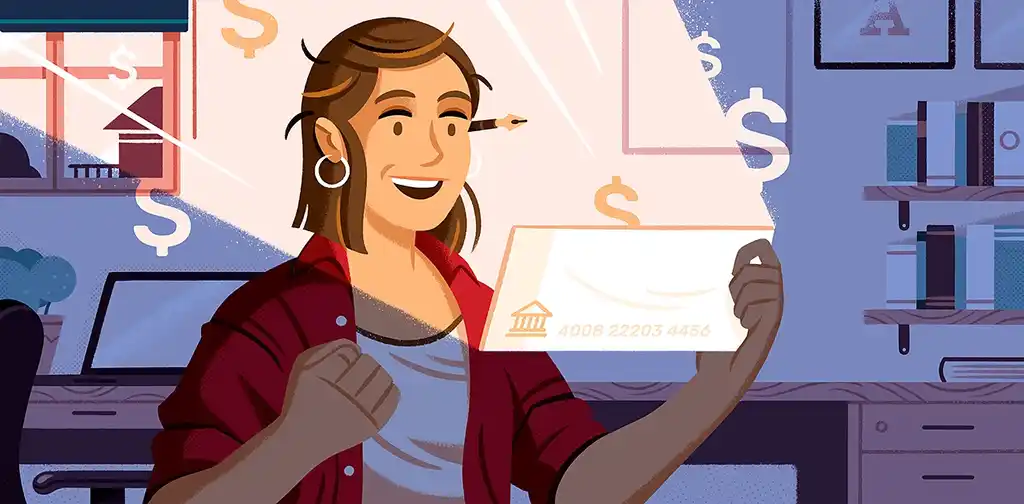
When it comes to what authors earn for every book sold, Copps confirms that Amazon Publishing’s author-centric model tends to pay slightly higher royalties across the board on digital, physical, and audio formats. This would make sense, considering how Amazon keeps a higher percentage of the sale price than any other publisher out there. Their authors would theoretically start earning out their advance quicker than they would with other publishing companies — which may be appealing, considering many published novels don’t outsell their advance in the first place.
Another interesting feature of Amazon’s model is their APub dashboard. Much like the KDP dashboard and reports tab for self-publishing authors, this function allows Amazon authors to see their sales data, monthly royalty reports, and reader feedback all in one place. This approach may be preferable to the more sporadic reports that authors would get from other traditional presses.
Ultimately, deciding to publish with an Amazon imprint comes down to your own goals and what you want to achieve. At the end of the day, a book is an idea and dream, and Amazon’s model is appealing in many ways for a lot of authors. But writing isn’t just selling books, it’s also sharing experiences, so you have to decide how you want to share yours.






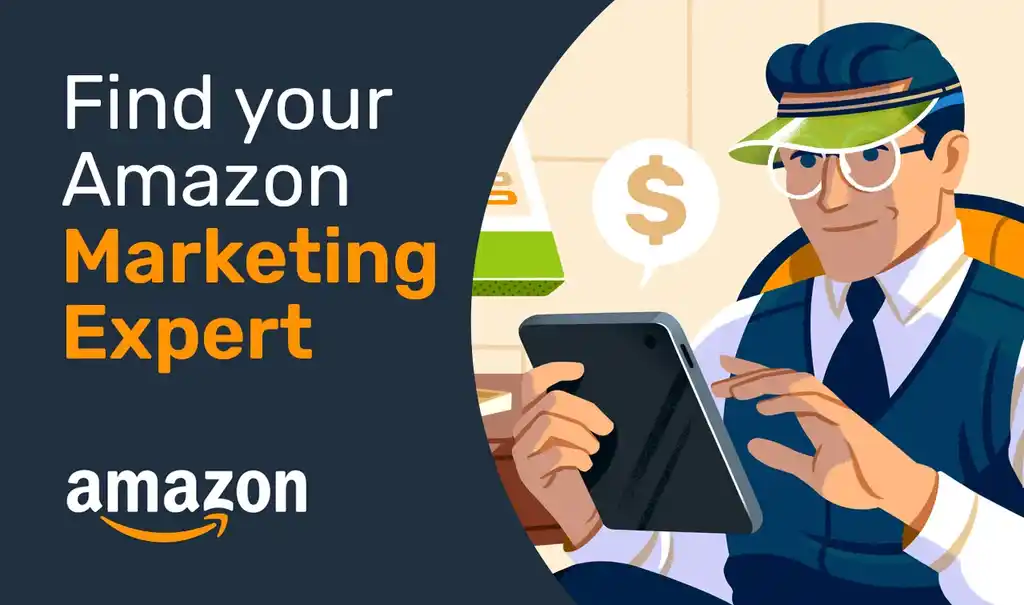

2 responses
Harvey Stanbrough says:
17/07/2019 – 13:13
I wonder whether APub acquires all rights for the life of the copyright like most (if not all) traditional publishers do. I don't think that was mentioned in the article.
LEONARD W. LINDROS, JR. says:
27/08/2019 – 20:47
I have written a 60 page, approx. 25,000 word memoir of 80 years with the dogs I love.... everyone of them! My dog as a young lad, my children's dog as a father, my grand-dogs and my many community dogs. I have written this for oldsters, like me, and for young children. It describes a multitude of various types of breeds, mixes, etc. It illustrates the cleverness of dogs and how they we become so endeared with them.